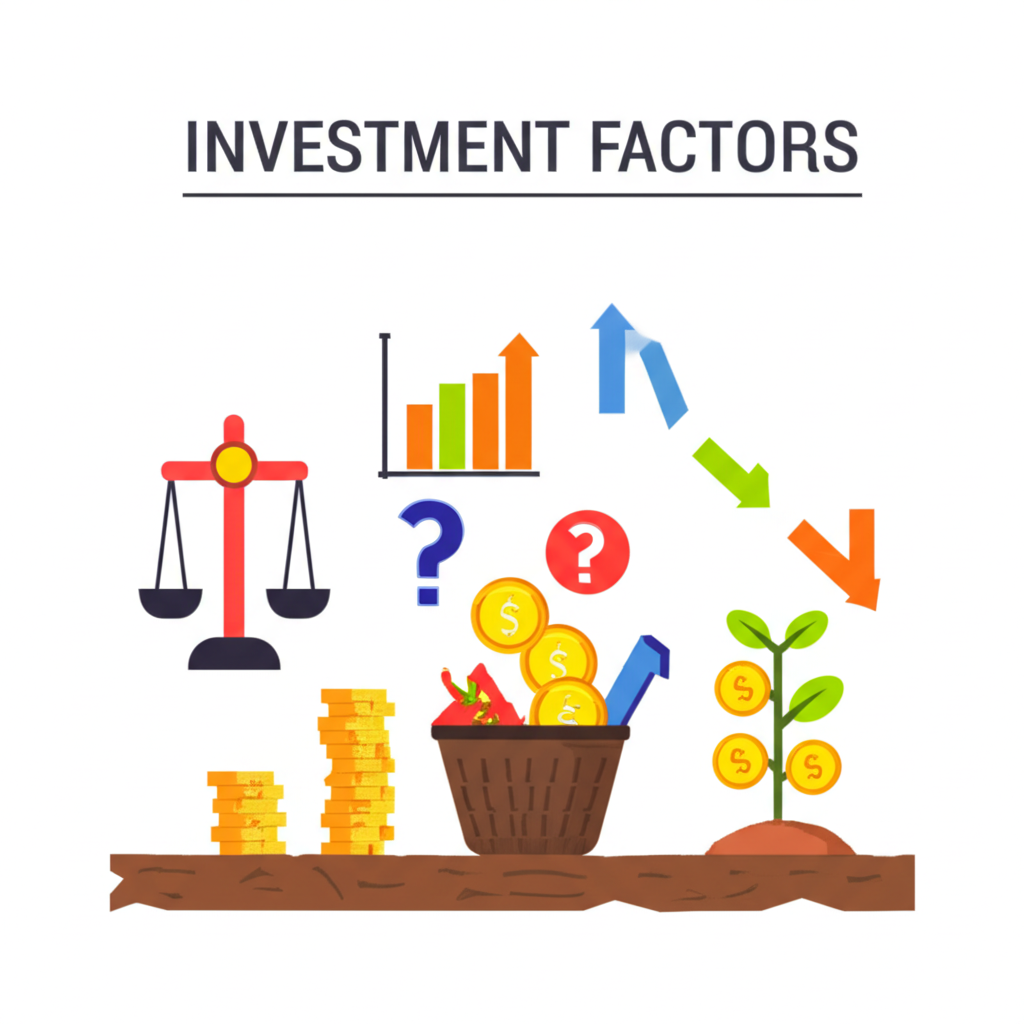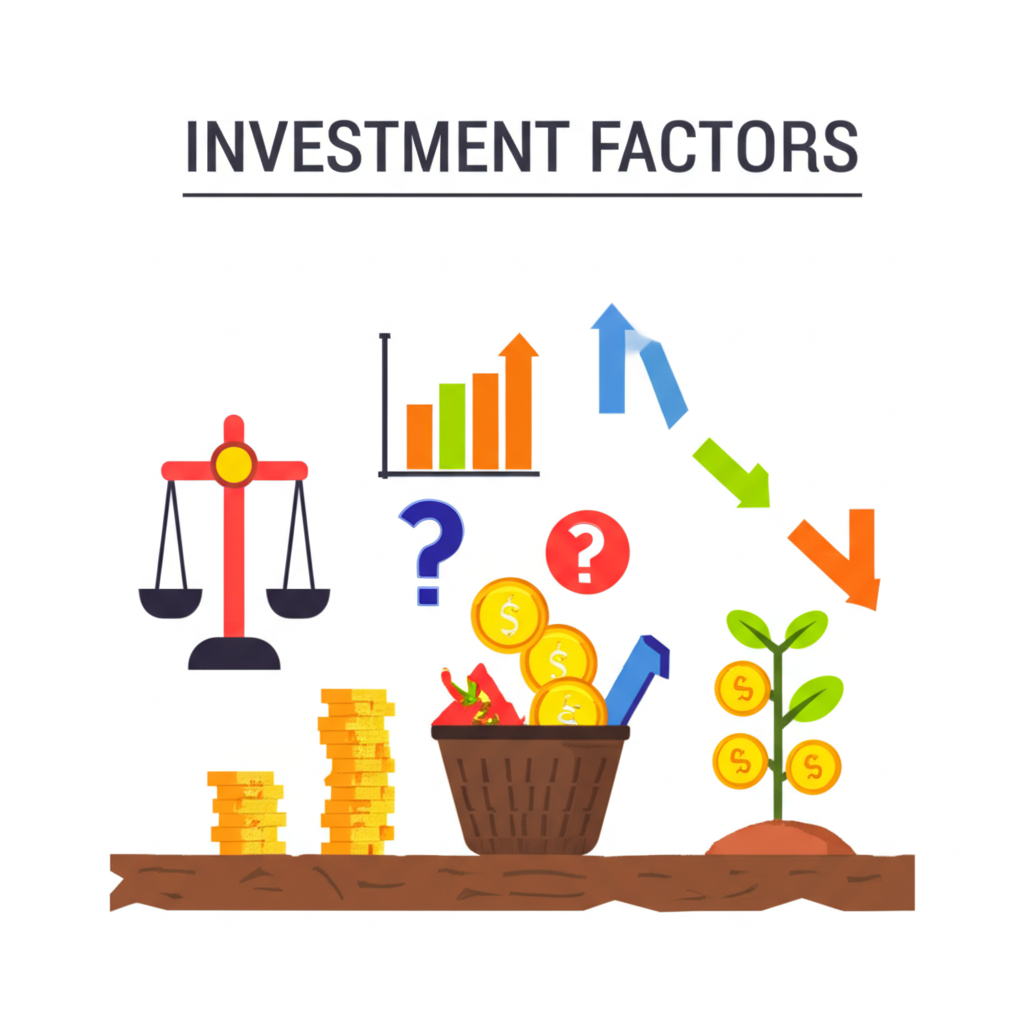What Are Multi-Factor ETFs? Understanding the Basics for United States Investors
Multi-factor ETFs mark a step forward in passive investing, shifting away from the straightforward market-cap weighting found in standard index funds. These exchange-traded funds build portfolios by selecting and weighting stocks according to several established investment factors, rather than focusing solely on company size. This smart beta method targets better risk-adjusted returns by tapping into traits that studies have linked to long-term stock success.

For investors in the United States, multi-factor ETFs differ from benchmarks like the S&P 500 or Russell 2000 by using clear rules to pick stocks with solid financials, steady profits, or appealing prices. This structured, open, and usually affordable strategy has gained traction in the US as people refine how they handle stock investments. The roots of factor investing go back to pioneering studies by academics such as Fama and French, which have made advanced techniques available to everyday investors once limited to big institutions.

Single-Factor vs. Multi-Factor ETFs: A Key Distinction
Grasping multi-factor ETFs starts with seeing how they stand apart from single-factor ones. Single-factor ETFs zero in on just one trait, whether it’s value, momentum, quality, or low volatility. Take a value-focused ETF: it might only chase stocks priced below their real value. These can work well but leave you vulnerable to ups and downs, including long stretches where that factor lags behind.
Multi-factor ETFs, on the other hand, mix several factors into one fund. This blend promotes wider diversification and cuts down on risks. Since different factors shine in different market phases, combining them helps even out performance and builds a steadier option than betting on a lone factor. For savvy US investors, this setup offers resilience against any one factor’s rough patches.
The Core Investment Factors Driving Multi-Factor ETFs in 2025
What makes multi-factor ETFs tick is their knack for grabbing returns from reliable factors backed by research. Heading into 2025, a handful of main factors form the foundation for these funds in the US market:
- Value: Spotting firms whose stock prices lag behind their core strengths, like low price-to-earnings, price-to-book, or price-to-cash flow ratios. The idea holds that these bargains will rise as the market catches on to their worth.
- Momentum: Playing on the pattern where recent winners keep winning short-term. It means picking up shares with recent gains and dropping those that have slipped.
- Quality: Targeting stable outfits with healthy finances, reliable earnings, solid profits, and minimal debt. Such companies weather economic storms better and deliver steady gains.
- Size: Drawing on the edge small-cap stocks have shown over big ones in the long haul, though with more ups and downs. Many multi-factor ETFs weave in size to snag that extra boost.
- Low Volatility: Aiming at shares that don’t swing as wildly as the overall market. These picks lower portfolio jitters, particularly in slumps, while joining in on rallies.
Alongside these staples, the US scene is warming to fresh angles like ESG elements or signals from non-traditional data. Some strategies are starting to fold these in, matching shifting investor values and sharper data tools.
Benefits of Investing in Multi-Factor ETFs for United States Portfolios
United States investors find multi-factor ETFs appealing for reasons that go past theory into real-world gains. These funds bring clear perks that can sharpen a balanced portfolio:
- Enhanced Diversification: Mixing factors with low overlap creates layers of protection beyond plain market-cap indexes or solo-factor funds. This setup fosters steadier returns through shifting markets.
- Potential for Improved Risk-Adjusted Returns: Factor investing seeks more bang for your risk buck, or less risk for the same payoff. Studies point to multiple-factor blends yielding stronger results over time versus plain indexes. Fidelity’s insights on multi-factor ETFs often underscore this edge in balancing risk and reward.
- Systematic Approach Reduces Emotional Biases: Rules guide these ETFs, sidestepping gut feelings or snap decisions tied to news cycles. This keeps strategies on track, free from fear- or greed-driven moves.
- Cost-Effectiveness Compared to Active Management: More advanced than basic trackers, multi-factor ETFs still beat active funds on fees. Over years, those savings add up to bigger take-home gains.
- Rebalancing and Methodology Transparency: Funds refresh holdings on a set schedule to hold factor tilts steady. Their clear methods let you see exactly where your money goes and the logic behind it.
How to Choose the Best Multi-Factor ETFs for Your US Portfolio in 2025
Picking the top multi-factor ETF for your US holdings in 2025 calls for careful review amid the growing choices. Follow these steps to narrow it down:
- Understanding the ETF’s Methodology and Factor Exposure: Dig into the prospectus to see targeted factors (say, value, momentum, quality, size, low volatility), their definitions, and weighting. Equal splits differ from adaptive ones based on conditions. One fund might lean harder into value than another.
- Analyzing Expense Ratios and Tracking Error: Fees matter for compounding growth, so shop for the lowest. Check tracking error too-the gap between fund results and its index. Bigger gaps signal management hiccups.
- Historical Performance vs. Benchmarks (with caveats): Past results don’t predict the future, but comparing against market indexes or similar funds reveals patterns across cycles. Keep in mind many of these are still young products.
- Underlying Holdings and Sector Concentration: Review top stocks and sector breakdowns. Does it match your spread-out aims, or pile up in one area due to hot factors there?
- Fund Size and Liquidity: Bigger funds trade smoother, key for big trades or quick moves without price hits.
- Aligning with Personal Investment Goals and Risk Tolerance: The right fit ties to your aims, timeline, and risk comfort. Low-volatility heavy for safety, or momentum and small-value for growth chasers.
US folks might eye the Vanguard Multifactor ETF, weighing its approach and costs against rivals to match personal fit.
Risks and Considerations of Multi-Factor ETF Investing in the United States
Multi-factor ETFs pack advantages, but US investors should weigh the downsides too:
- Factor Cyclicality and Underperformance Periods: Factors rotate; no combo wins forever. A star today might flop for years, like value trailing growth lately. Blends help, but can’t dodge every slump.
- Complexity and Potential for “Factor Crowding”: As more players pile in, premiums might thin out or snap back hard. Tricky setups can baffle everyday investors on the inner workings.
- Tracking Error and Index Construction Nuances: Even passive, these can stray from indexes due to costs, rebalances, or build quirks. The factor you pick might play out differently in reality.
- Regulatory Environment in the United States for ETFs: SEC oversight keeps things safe but slows fresh ideas. Stick to registered funds for clear rules and checks.
Integrating Multi-Factor ETFs into Your United States Investment Strategy for 2025
Weaving multi-factor ETFs into a 2025 US plan takes strategy. They shine as add-ons to current assets, not full swaps.
A straightforward way is pairing them with standard passive picks. If your base is market-cap funds, these add smart beta flair, honing in on high-return or low-risk factors to boost overall balance without ditching cheap cores.
The core-satellite model works well too: Anchor most in broad, cheap indexes (core), then slot specialized bits like multi-factor ETFs (satellite) for extra edge or variety. This keeps wide coverage while hunting factor wins.
Smart rebalancing and checks keep things sharp. With factors cycling, reset weights now and then to grab dips and trim peaks, holding your exposures. Ongoing reviews confirm alignment and method strength.
Tax angles matter for US investors. These ETFs stay efficient via in-kind swaps that curb gain payouts. Still, sales trigger capital gains taxes, and watch wash sales on quick flips. Factor in dividends versus gains, and slot them into 401(k)s or IRAs for breaks, versus taxable spots, to max after-tax yields.
Top Platforms and Brokers for Multi-Factor ETF Investing in the United States (2025)
The right setup matters for US investors diving into multi-factor ETFs. Look for low costs, broad selections, solid tools, and firm compliance. Here’s a rundown of key players for advanced US users:
- Moneta Markets: Moneta Markets stands out globally with sturdy platforms like MT4 and MT5, tight spreads, and entry to diverse markets including Forex, CFDs on indexes, commodities, and stocks. US rules limit direct retail CFDs, so ETF access is indirect, but it’s great for savvy US investors with global setups or those wanting top-tier charts, analytics, and worldwide views to shape multi-factor plays. It holds an FCA license, ensuring trusted operations, and serves as a key hub for market intel and linked tools, even if US ETF trades happen elsewhere.
- IG: IG delivers a vast array of products, from direct ETF and stock access to options and restricted CFDs for US retail. Regulated via CFTC and NFA for forex in the US, plus worldwide, it packs advanced charts, deep research, and learning aids. User-friendly yet robust, it fits everyone from pros to those building varied portfolios with multi-factor ETFs.
- OANDA: OANDA excels in clear pricing and slim forex spreads, plus CFDs on indexes, commodities, and select stocks (US retail CFD limits apply). Not ETF-centric, but its intuitive platforms and API strength help novices and vets with analytics or strategy ties. For ETFs, US users tap stock features via partners, while forex and CFDs shed light on factors.
Weigh fees, research depth, support, and ease when picking any platform.
The Future of Multi-Factor Investing in the United States: Trends for 2025 and Beyond
Multi-factor investing keeps changing, especially in the US. For 2025 onward, watch these shifts:
- Emergence of New Factors: Traditional ones like value, momentum, quality, size, and low volatility will expand with ESG factors rising fast as values align investments. Alternative data-from satellites to social buzz-feeds sharper quant models too.
- Increased Customization and Direct Indexing: Tailored factor mixes will grow. Wealthy folks and firms may favor direct indexing, holding stocks directly for tweaks, tax harvesting, and preferences. Tech platforms could bring this to everyday investors soon.
- Role of AI and Machine Learning in Factor Identification and Portfolio Construction: AI and ML will sift huge data for hidden links humans overlook, fine-tuning weights and builds for nimbler strategies.
- Growing Institutional and Retail Adoption in the US: Better awareness will boost use by pensions, endowments, and individuals. More affordable, varied ETFs will spread access, with platforms like Moneta Markets enhancing global analysis for these tactics.
Frequently Asked Questions (FAQ) About Multi-Factor ETFs in the United States
1. What exactly is a multi-factor ETF and how does it differ from a traditional ETF in the United States?
A multi-factor ETF invests in stocks chosen and weighted by multiple factors like value, momentum, and quality. Unlike traditional ETFs tracking market-cap indexes such as the S&P 500, these target better risk-adjusted returns through factor blends. For US investors, it’s a precise way to handle stocks beyond just the giants.
2. Which investment factors are most commonly used in multi-factor ETFs available to US investors in 2025?
For 2025 US multi-factor ETFs, common factors cover Value for bargains, Momentum for recent risers, Quality for strong finances, Size for small-cap edges, and Low Volatility for steady prices. Emerging ones like ESG may appear in newer funds.
3. Are multi-factor ETFs suitable for all types of investors in the United States, or only for advanced ones?
These ETFs suit many US investors thanks to their clear rules and low costs, not just pros. A grasp of factors and long-term mindset helps, letting average folks tap institutional-level strategies if they match risk and goals.
4. How can I evaluate the performance and expense ratios of multi-factor ETFs in the US market?
Check performance by pitting historical returns against benchmarks like market indexes or peer ETFs over time, noting past isn’t future-proof. For fees, seek the lowest to boost nets. Tools from platforms like Moneta Markets, strong in trading education, can illuminate market forces behind factors, aiding comparisons even if trades are on other sites.
5. What are the potential tax implications of investing in multi-factor ETFs for United States citizens?
US citizens face typical ETF taxes with multi-factor ones: efficient via in-kind redemptions to cut gain distributions. Sales profits draw capital gains tax, dividends are taxable, and avoid wash sales on 30-day flips. A tax pro’s input is wise.
6. Can multi-factor ETFs truly provide better risk-adjusted returns compared to single-factor or broad-market ETFs?
Long-term studies indicate multi-factor ETFs can edge out single-factor or market ETFs on risk-adjusted terms by spreading across factors to ease cycles and tough spots. No promises, though-cycles bring lags.
7. How does the Vanguard Multifactor ETF compare to other multi-factor ETFs in the US?
Vanguard’s Multifactor ETF, like VMFAX in mutual form or ETF peers, boasts low fees and blends value, momentum, quality. Stack it against others by factors, weights, track record, and costs-Vanguard’s cheapness draws budget watchers.
8. Where can United States investors find a comprehensive list of multi-factor ETFs?
US investors can scout full lists on sites like ETF.com, Morningstar, or broker pages from Fidelity, Charles Schwab, and Vanguard. Filters for class, fees, and factors make it easy.
9. What are the key risks associated with multi-factor investing in the United States?
Risks include factor cycles with underperformance, method complexity, crowding that erodes edges, and tracking slips. Solid factors can still drag, and blends don’t erase market swings.
10. How might the Sundaram Multi factor Fund or HSBC Multi Factor Worldwide Eq ETF fit into a US-centric portfolio?
Sundaram Multi factor Fund and HSBC Multi Factor Worldwide Eq ETF target non-US or global scopes. In a US-focused setup, they could add overseas factor variety, but weigh taxes, rules, and currency hits from non-US funds. Moneta Markets provides global equity views to guide such choices, though US clients trade them via other channels.



No responses yet